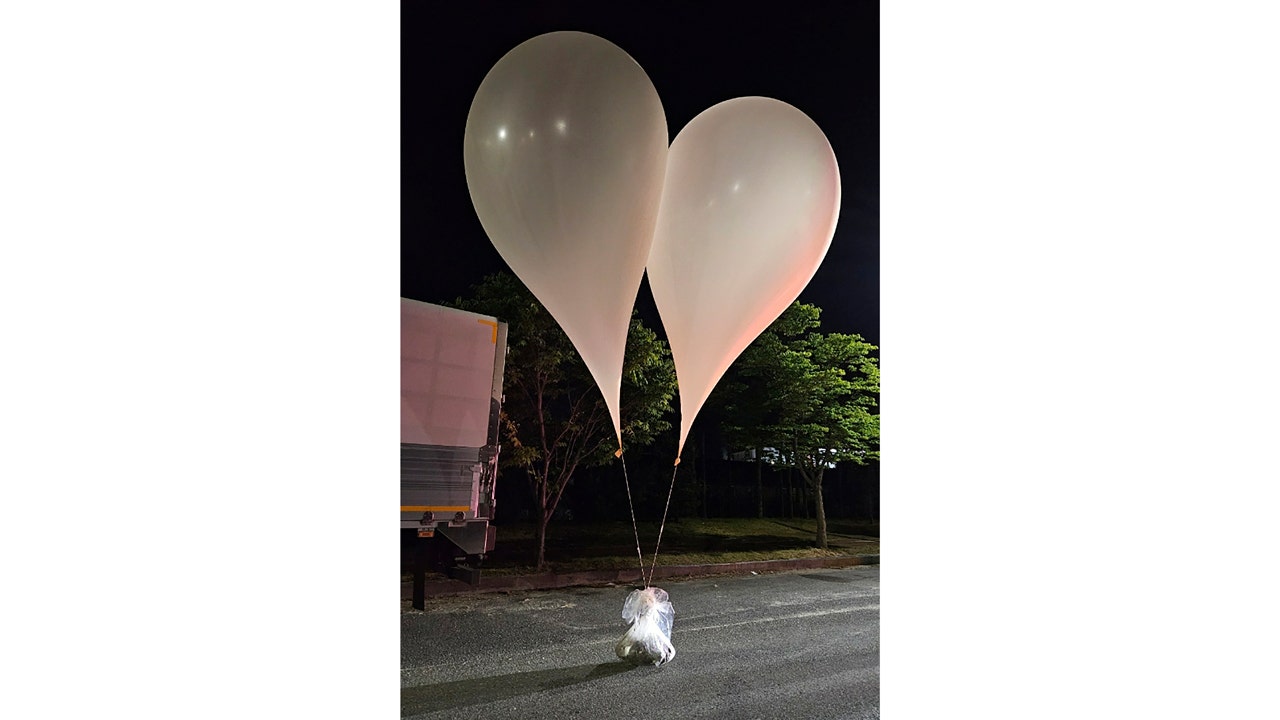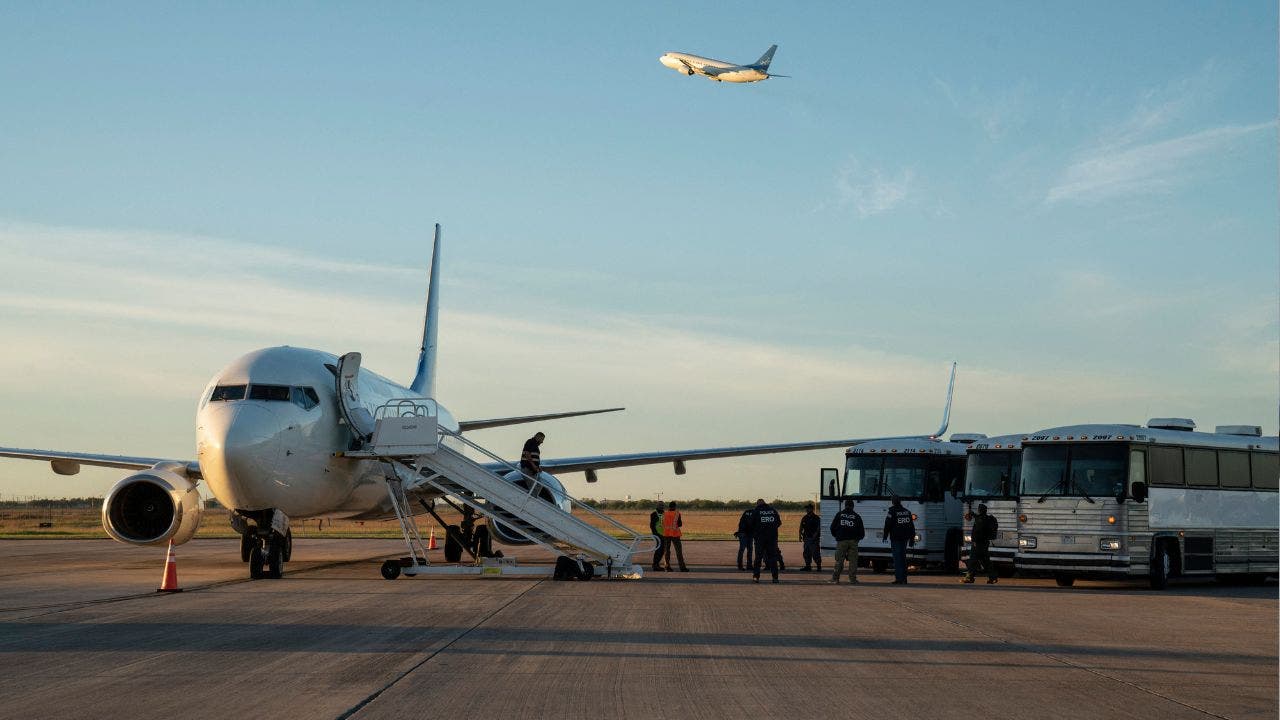- North Korea has flown hundreds of balloons carrying trash toward South Korea.
- North Korean leader Kim Jong Un urged his military scientists to overcome a failed satellite launch and continue developing space-based reconnaissance capabilities, which he described as crucial for countering U.S. and South Korean military activities.
- Kim also warned of unspecified “stern” action against South Korea over an exercise involving 20 fighter jets near the inter-Korean border hours before North Korea’s failed launch.
North Korea flew hundreds of balloons carrying trash and manure toward South Korea in one of its most bizarre provocations against its rival in years, prompting the South’s military to mobilize chemical and explosive response teams to recover objects and debris in different parts of the country.
The balloon campaign came as North Korean leader Kim Jong Un urged his military scientists to overcome a failed satellite launch and continue developing space-based reconnaissance capabilities, which he described as crucial for countering U.S. and South Korean military activities, state media said Wednesday.
In his first public comments about the launch failure, Kim also warned of unspecified “overwhelming actions” against South Korea over an exercise involving 20 fighter jets near the inter-Korean border hours before North Korea’s failed launch on Monday. In a speech Tuesday, Kim described the South Korean response as a “hysterical attack formation flight and strike drill” and a “direct military challenge” towards North Korea, the North’s official Korean Central News Agency said Wednesday.
NORTH KOREA TEST-FIRES SUSPECTED MISSILES AFTER US AND SOUTH KOREA CONDUCT FIGHTER JET DRILL
South Korea’s Joint Chiefs of Staff said North Korea also has been flying large numbers of trash-carrying balloons toward the South since Tuesday night, in an apparent retaliation against South Korean activists for flying anti-Pyongyang propaganda leaflets across the border.
The South’s military said about 260 North Korean balloons were found dropped in various parts of the country as of Wednesday afternoon and were being recovered by military rapid response and explosive clearance teams. The military said the balloons brought various types of trash and manure but it so far found no human excrement. It advised civilians not to touch the objects flown from North Korea and to report to military or police after discovering them.
Photos released by the military showed trash scattered across highways and roads in different parts of the country. In the capital, Seoul, military officials found what appeared to be a timer that was likely designed to pop the bags of trash midair. In the central South Chungcheong province, two huge balloons carrying an un-popped plastic bag filled with dirt-like substances were seen at a road.

This photo provided by the South Korea Defense Ministry shows balloons with trash presumably sent by North Korea, in South Chungcheong Province, South Korea, on May 29, 2024. (South Korea Presidential Office via AP)
There were no immediate reports of damage caused by the balloons. Similar North Korean balloon activities damaged cars and other property in 2016.
In a statement issued over the weekend, North Korean Vice Defense Minister Kim Kang Il said the North was planning to scatter “mounds of wastepaper and filth” over border areas and other parts of South Korea, in what he described as “tit-for-tat” action against the leafletting by South Korean activists.
Kim Jong Un’s comments about the satellite were from a speech at the North’s Academy of Defense Sciences, which he visited a day after a rocket carrying what would have been his country’s second military reconnaissance satellite exploded shortly after liftoff. North Korea’s aerospace technology administration said the explosion was possibly related to the reliability of a newly developed rocket engine that is fueled by petroleum and uses liquid oxygen as an oxidizer.
Animosities between the Koreas are at their worst level in years as the pace of both Kim’s weapons demonstrations and South Korea’s combined military exercises with the U.S. and Japan have intensified since 2022.
The failed satellite launch was a setback to Kim’s plan to launch three more military spy satellites in 2024 after North Korea’s first military reconnaissance satellite was placed in orbit last November. The November launch followed two failed attempts.
Monday’s launch drew criticism from South Korea, Japan and the United States, because the United Nations bans North Korea from conducting any such rocket launches, viewing them as covers for testing long-range missile technology.
North Korea has steadfastly maintained it has the right to launch satellites and test missiles in the face of what it perceives as U.S.-led military threats. Kim has described spy satellites as crucial for monitoring U.S. and South Korean military activities and enhancing the threat posed by his nuclear-capable missiles.
“Given the fact that the security environment for our state is undergoing drastic changes owing to the U.S. military maneuvers and provocations of all sorts, possessing military reconnaissance satellites presents itself as a prerequisite for our state to bolster up its self-defensive deterrent and safeguard its sovereignty and security from potential threats,” Kim said.
“Although we failed to achieve the results we had hoped to get in the recent reconnaissance satellite launch, we must never feel scared or dispirited but make still greater efforts. It is natural that one learns more and makes greater progress after experiencing failure.”
North Korea hasn’t commented on when it would be ready to attempt a satellite launch again, which some experts say could take months.
State media’s mention of a liquid oxygen-petroleum rocket engine suggests the North is trying to develop a more powerful space launch vehicle that could handle larger payloads, according to some South Korean experts.
CLICK HERE TO GET THE FOX NEWS APP
It is believed that North Korea’s previous space rockets used unsymmetrical dimethylhydrazine as fuel and dinitrogen tetroxide as an oxidizer. The country’s swift transition in space rocket designs possibly indicates external technological help, which would likely come from Russia, said Chang Young-keun, a missile expert at South Korea’s Research Institute for National Strategy.
Kim has been boosting the visibility of his ties with Russia in recent months, highlighted by a summit with Russian President Vladimir Putin in September, as they align in the face of their separate confrontations with Washington. Kim’s meeting with Putin was held at a spaceport in the Russian Far East and came after North Korea’s consecutive failures in its attempts to launch its first spy satellite. Putin then told Russian reporters that Moscow was willing to help the North build satellites.
The U.S. and South Korea have also accused North Korea of providing Russia with artillery shells, missiles and other military equipment to help prolong its fighting in Ukraine.






